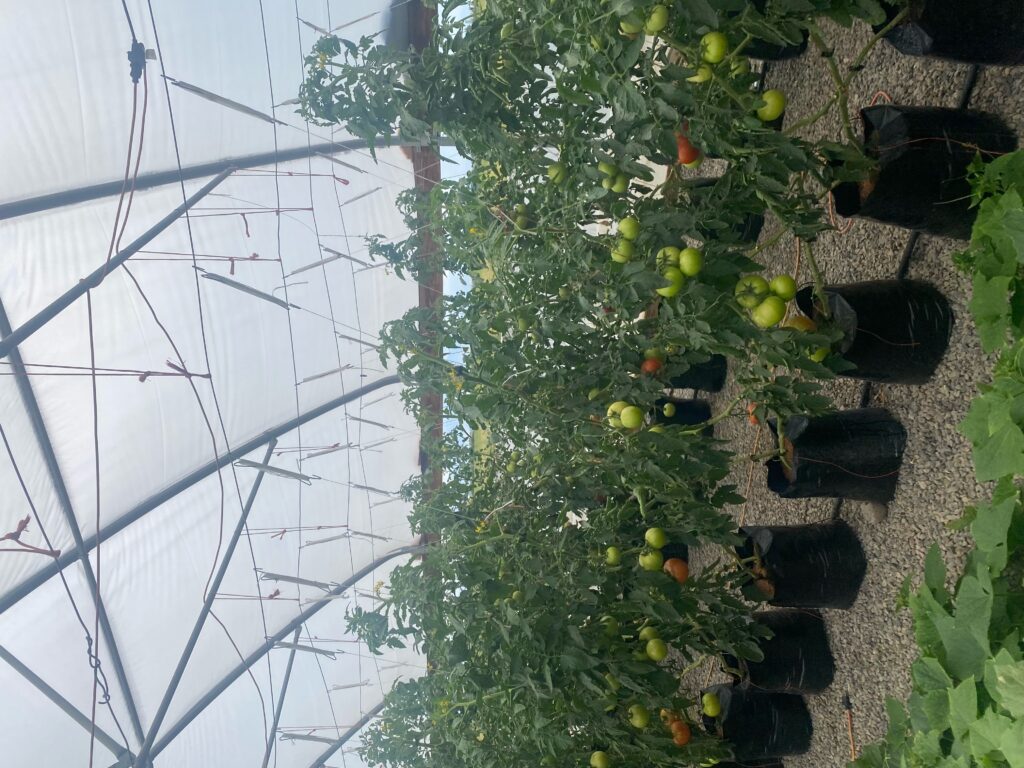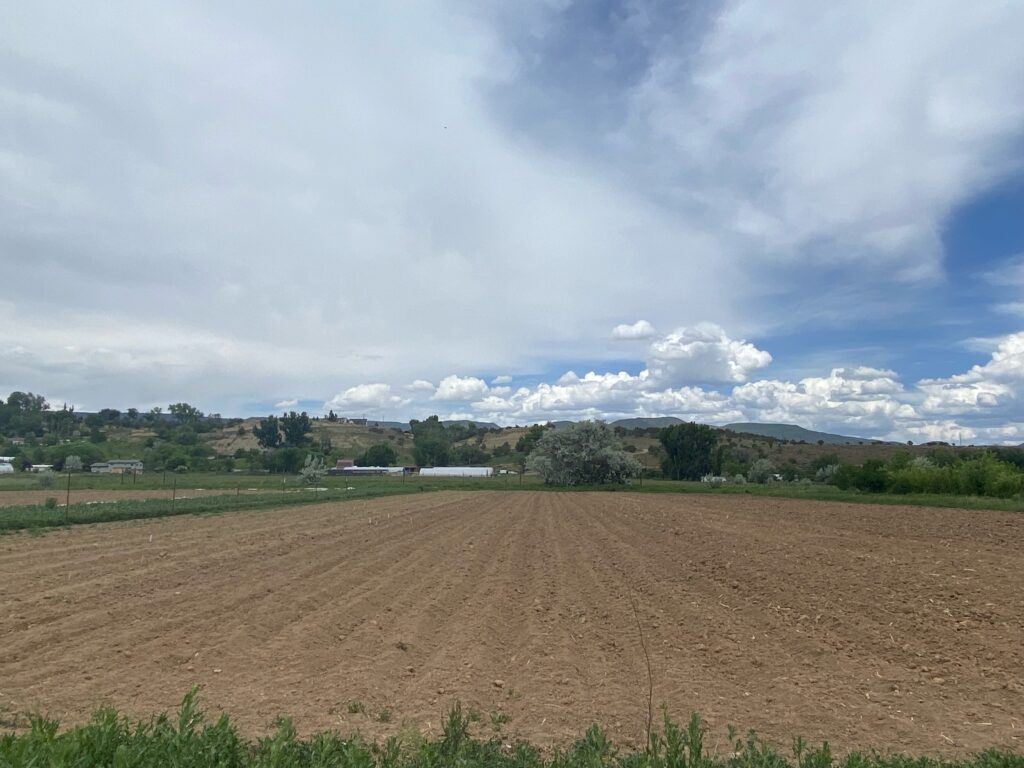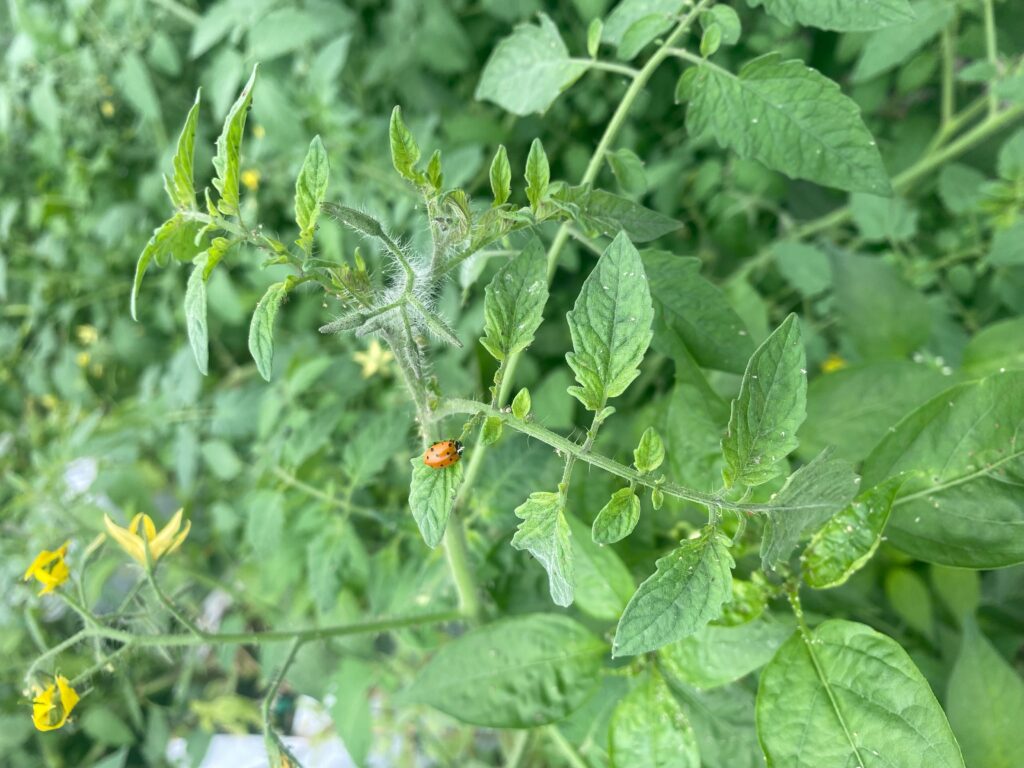A few months ago, during one of my first interviews of the summer, I was trying to discern how farmers’ experience of farming varied from crop to crop. For example, what is different about farming tomatoes versus, say, potatoes? I wondered if farmers favored certain crops — or certain methods — and if that might affect what they prioritized during environmentally challenging years. Thinking back to my own experience managing an educational garden, I remember forming a special attachment to snow peas. Not only do they taste amazing (my mouth is watering just thinking about their crisp burst of sweetness on a hot day), but there is something magical about combing the trellis for fresh peas — I’d like to imagine that the feeling of finding a hidden pea amongst snaking vines is something akin to uncovering a nugget of gold.
I posed this question to a farmer who was enthralled by tomatoes, growing over 175 different varieties. When I asked him how his experience of growing tomatoes differed from his experience of growing potatoes, he paused for a moment, then said “Somewhere in that question is another question: is it a crop or is it a plant?” Until then, I’d never considered the difference between a crop and a plant. So, I’ve been asking other farmers what they think.


Often when I pose this question to farmers, they are taken aback. Like me, many have never considered what makes a crop a crop, or a plant a plant. It takes them a few minutes to think. Many cite the economic value applied to “crops” that is not otherwise applied to “plants”. Yet, the same farmers will describe their favorite “crops” as “plants” when further probed. Perhaps in the same way that a square is a rectangle, a crop is a plant, but not all plants are crops? Some farmers point to quantity as the differentiating factor arguing that an individual carrot, for example, is a plant, but a row of carrots would constitute a crop. A few farmers have even described livestock as a crop, which has challenged me to completely re-evaluate my understanding.
While I still haven’t been able to form a concrete answer for myself, I am reminded of an essay by Betty Fussel in which Fussel considers the colonial history of maize (1999). She argues that the linguistic translation of ‘maize’ to ‘corn’ signified the commodification of ‘maize’, a plant, into ‘corn’, a crop:
The greatest difference between corn and maize, however, lies in the symbolic freight that each word carries. If north of Mexico, European immigrants built an industrial kingdom and a global empire on the economic power of corn, in Mesoamerica the Olmec a thousand years before Christ founded a complete universe—a language, calendar, mythos, and cosmos—on the symbolic power of maize. If the one culture diminished a staple food to merchandise, the other sanctified it as divine. (Fussell 199:58)
Similarly, I think it’s fair to argue that the linguistic translation of ‘plant’ to ‘crop’ reconfigures ‘crops’ as purely human commodities, ultimately invisibilizing the more-than-human actors (think pollinators, water, animals/livestock, soil microbes) that all contributed to the growth of said ‘crop’. It’s this type of language that reinforces a human/nature divide, ultimately promoting the fallacy that what happens in and to ‘nature’ has no direct effect on us. As we are part of nature, what happens to nature is also happening to us. While the difference between a plant and a crop may not seem relevant at first glance, the symbolic weight that each word carries shapes our relationship with more-than-humanity.

Works Cited
Fussell, B. (1999). Translating Maize into Corn: The Transformation of America’s Native Grain. Social Research, 66(1), 41–65.
STUDENT RESEARCHER

Julia Jacobson, Western Resource Fellow | Julia is a Master of Environmental Science student interested in the intersections of multispecies interactions, food, and community. Her research aims to understand how farmers in southwest Colorado are experiencing and responding to climate change, and the more-than-human interactions involved in these processes. Prior to coming to the Yale School of the Environment, Julia worked as an environmental journalist and educator in her hometown of Gunnison, Colorado. She holds a B.S. in ecology and evolutionary biology and a B.A. in English literature from the University of Colorado at Boulder. In her freetime, Julia enjoys skiing, rafting, hiking, gardening, and all things outside. See what Julia has been up to. | Blog
